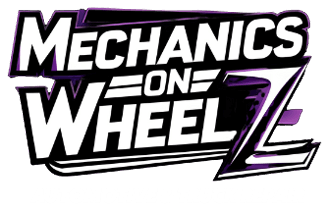Problems in cars will mostly produce various signs and being able to recognize those signs can help you correctly diagnose your vehicle. Before your car breaks down in the middle of the road and you need roadside assistance, it is best to notice the signs. Mobile mechanics can go wherever you are but it would be best to call for their services at a safe place rather than the middle of the road.
One of the signs that can indicate a problem in your car is the smoke that it produces. As we drive our car, we often do not notice the smoke produced because it’s at the back. However, the smoke your car produces should be noted. Before a mechanic fixes your vehicle, they first need to identify the problem. If you know your car, then you’ll be able to tell them exactly what they need to know to figure out the problem.
Being able to diagnose the problem of your car brings a satisfying feeling. It also helps you feel confident that the mobile mechanics won’t charge more than what is really needed. Even if you don’t know what exactly is wrong with your car, some understanding of what is happening to your vehicle can help you identify what the problem is.
When it comes to smoke in your tailpipe, there are two main things to take note of. The first is the source of the smoke and the second is the color of the smoke.
Where Is The Smoke Coming From?
If you find steam coming out of the tailpipe, then you need not worry. This can happen when there is condensation that builds up and gets released due to the heat of your car. The tailpipe will normally release smoke but you have to take note of what it is releasing.
On the other hand, smoke coming from the engine is something that you should look out for. Some people would conclude that smoke coming from the engine is only due to overheating. This may be true for some vehicles but isn’t for all, there are other more serious causes of a smoking engine. It is a sign of a more serious problem, which means that the car really needs to be checked out.
What Is The Color Of The Smoke?
The color of the smoke coming from your exhaust can indicate what the problem of the car is. You should take note of the color of the smoke from your tailpipe so that issues with your car can be figured out. Sometimes, it can be difficult to see this as the smoke will usually appear when you accelerate or decelerate. Taking time to check while you’re in Park mode helps clearly see the color of your exhaust.
Black Smoke
A black smoke typically appears when there is only a partial burning in the combustion chamber or when one or more of the cylinders is flooded with fuel. The problem might be due to a clogged filter, a leaking fuel injector, restricted intake duct, or ignition problems.
Blue Smoke
Blue smoke from the tailpipe is a sign that the car is burning oil. Sometimes, the bluish color can also appear as dark grey smoke. This smoke color means that oil is leaking into the combustion chamber and is being burned together with the fuel. In this case, you should check and see any wear and tear in the piston, piston rings, valve seals, and engine oil seals. This can also be caused by the failure of the head gasket or a PVC valve malfunctioning.
White Smoke
White smoke can also be mistaken for vapor or steam. If this is the case, it would only produce a thin amount and wouldn’t cause a problem. This is caused by condensation build-up evaporated because of the car heat.
However, if the tailpipe produces a thicker white smoke, it can signify that the coolant is being burned by the engine. This can cause a serious problem with costly repairs if not immediately remedied. The leak in the coolant can also cause the car to overheat.
Post Tags – car exhaust, car smoking, smoking car Blog created by Matthew Paul Turner Blog
https://www.matthewpaulturner.net/a-smoking-car-heres-what-you-should-know/

